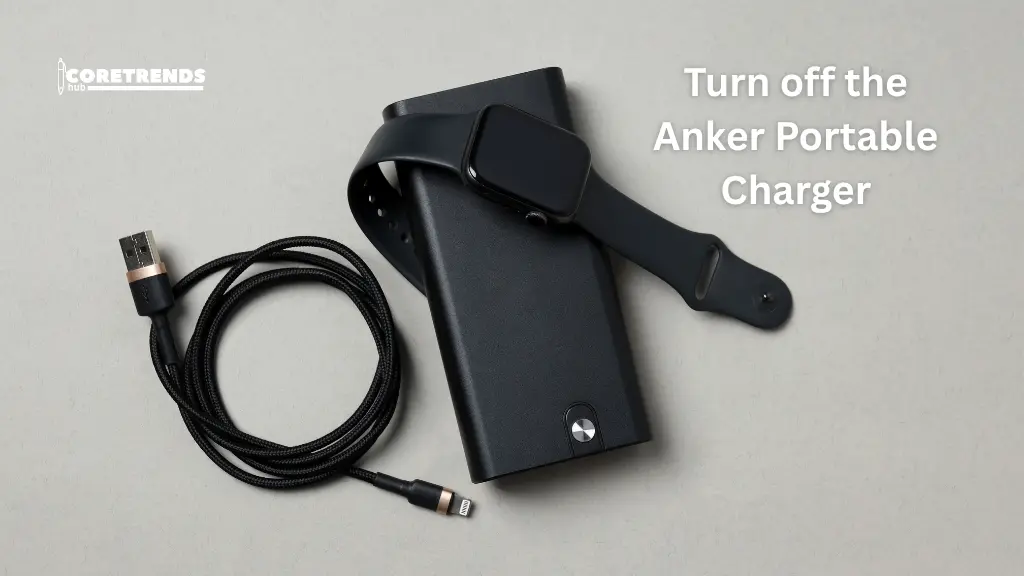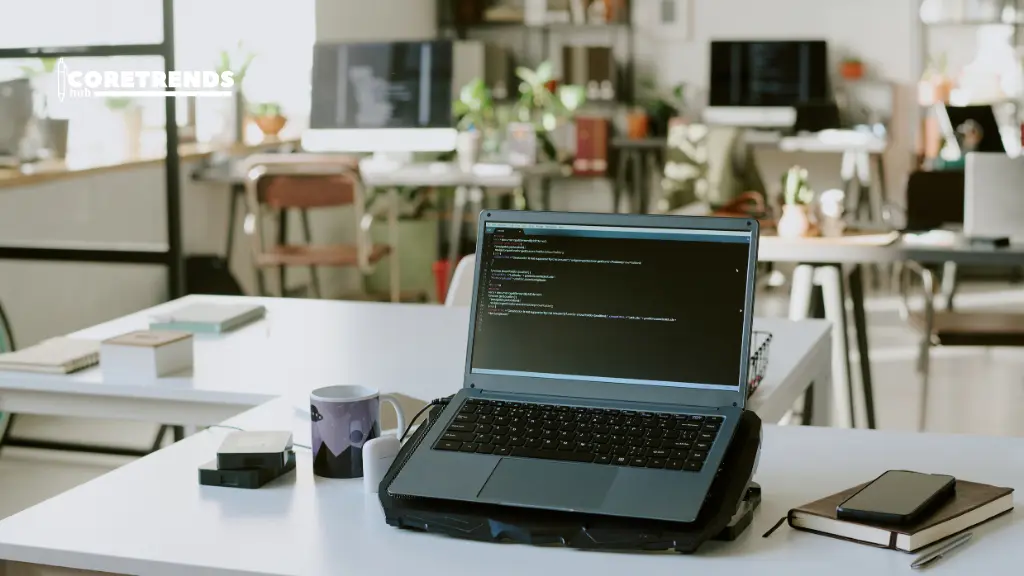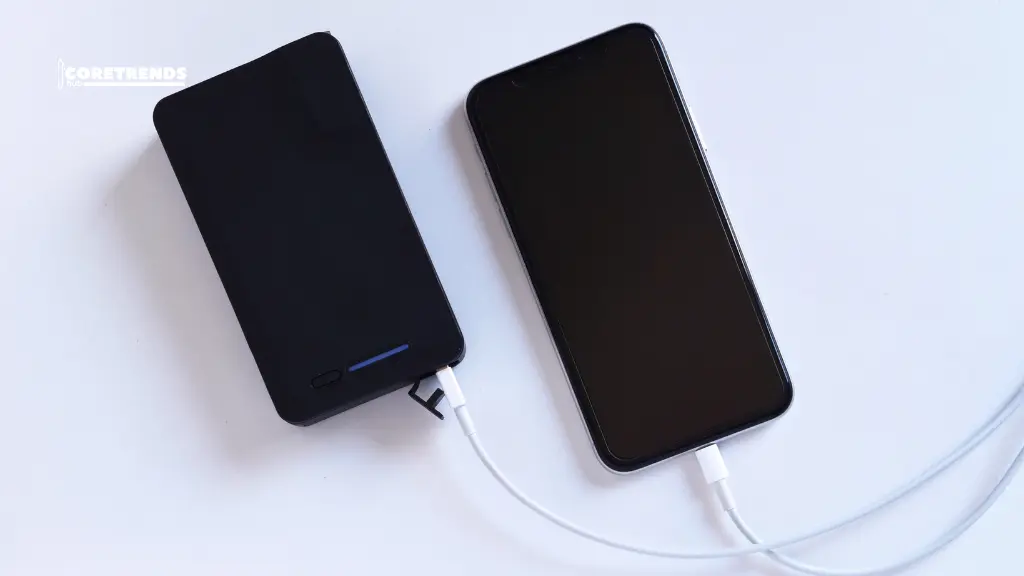Turning off your portable charger is important for a few simple reasons. First, it saves battery power. When the charger stays on, it uses energy even if no device is connected. This can make your charger run out faster when you actually need it. Turning it off also prevents the device from overheating. Continuous power flow can cause heat, which may reduce the battery’s lifespan over time.
Second, turning off the charger improves safety. An active charger left unattended can pose risks like short circuits or accidental damage. It also helps you manage your devices better and avoid unnecessary power drain. By switching it off when not in use, you extend its life and keep it working efficiently.
Table of Contents
Why You Might Want to Turn Off Your Anker Portable Charger
- Save Battery Power: When your Anker charger stays on without being used, it slowly drains its stored energy over time. Turning it off ensures the battery remains full and ready for when you actually need to charge your devices. This helps you get the maximum use out of each charge.
- Prevent Overheating: Continuous power flow can make the charger warm even when no device is connected. Overheating can damage the internal battery or reduce its lifespan. Turning off the charger keeps it cooler and ensures it performs efficiently over time.
- Improve Safety: An active charger left unattended increases the risk of short circuits or accidental damage from nearby objects. Switching it off reduces these risks and ensures safer usage in your home, office, or while traveling.
- Avoid Unnecessary Power Drain: Leaving the charger on can slowly drain connected devices, even if they are fully charged. Turning it off saves energy, helps your devices last longer, and keeps the charger ready for use whenever you need it.
How Anker Portable Chargers Work
1. Power Storage Basics
Anker portable chargers store electrical energy in built-in lithium-ion batteries. This stored energy can be used later to charge phones, tablets, or other devices when you don’t have access to a wall outlet. The battery capacity determines how many times you can fully charge your devices before the charger itself needs recharging.
2. Charging Devices
When you connect a device, the charger delivers stored energy through USB or USB-C ports. Anker chargers often feature smart charging technology that automatically adjusts the output to match your device’s needs. This ensures fast, safe, and efficient charging without overloading the battery of your device.
3. Auto-Shutoff Features
Many Anker chargers come with an automatic power-off feature. If no device is connected for a certain period, the charger shuts down to save energy and prevent overheating. This feature also helps protect the internal battery and extends the overall lifespan of the charger.
4. Charging While Idle
Some chargers allow small amounts of energy flow even when no device is connected, often to maintain internal battery stability. However, this can slowly drain power over time if the charger is left on. Turning off the charger completely avoids this slow energy loss and keeps it ready for future use.
Steps to Turn Off Anker Portable Charger
1. Simple Button Method
Most Anker chargers come with a power button that lets you turn them off manually. To use this method, press and hold the button for a few seconds until the indicator light goes off completely. This ensures the charger stops using battery power and stays ready for future use. Checking the lights after turning it off confirms that the device is fully powered down, which helps prevent unnecessary energy drain and protects the internal battery.
2. Automatic Power-Off Feature
Some Anker models include an automatic power-off function that activates when no device is connected for a certain period. This feature helps save battery and prevents the charger from overheating. It is especially useful if you forget to turn off the charger manually. Depending on the model, you may be able to activate or deactivate this feature using the power button or a specific sequence of presses, as described in the user manual.
3. Disconnecting Devices
Before turning off your charger, always unplug any connected devices. Leaving devices connected can cause a slow drain of energy and may interfere with the charger’s automatic shutoff function. Disconnecting devices ensures the charger powers down correctly, keeps its battery healthy, and prevents small energy loss that can happen even when no active charging is taking place.
Troubleshooting If the Charger Doesn’t Turn Off
Press and Hold the Power Button Longer
Sometimes the charger may need a longer press to respond properly. Hold the power button for several extra seconds until all indicator lights turn off. This ensures the charger fully powers down and stops using energy unnecessarily.
Fully Drain and Recharge the Charger
If holding the button doesn’t work, let the charger’s battery drain completely. Once it is fully discharged, recharge it to full capacity. This can reset the internal system and often resolves minor software or hardware glitches that prevent it from turning off.
Check for Minor Glitches
Occasionally, internal glitches or a stuck power button can prevent the charger from shutting down. Inspect the device carefully, ensuring the button is not jammed or obstructed. A quick visual check can help identify small issues before needing support.
Contact Anker Support
If none of the above steps work, reach out to Anker support. They can guide you through advanced troubleshooting, check if the charger is defective, and advise on repair or replacement options. This ensures your charger remains safe and reliable for daily use.
Common Mistakes to Avoid
- Leaving the Charger Always On: One common mistake is keeping your Anker charger powered on all the time. Even when no device is connected, it can slowly drain the battery and generate unnecessary heat. This reduces the charger’s lifespan over time.
- Using Incompatible Devices or Cables: Using devices or charging cables that are not compatible with your Anker charger can cause slow charging or even damage the charger. Always use recommended cables and check device compatibility before charging.
- Ignoring Maintenance and Cleaning: Dust, debris, or moisture can affect the charger’s performance. Neglecting regular cleaning may cause overheating or connection issues. Wipe the charger occasionally and keep it in a dry, clean environment.
- Overcharging the Charger: Leaving the charger plugged in after it is fully charged can slowly degrade the battery. It’s better to unplug it once it reaches 100% to maintain battery health and ensure optimal performance.
- Storing in Extreme Temperatures: Keeping your charger in very hot or cold conditions can damage the internal battery. Avoid leaving it in direct sunlight, a car, or near heaters. Store it in a cool, dry place to preserve its lifespan.
- Dropping or Mishandling the Charger: Physical damage from drops or rough handling can harm the internal battery and electronic components. Treat your charger carefully to prevent cracks, loose connections, or other malfunctions.
How to Store Your Anker Portable Charger Properly
Storing your Anker portable charger correctly helps keep it safe and extends its battery life. Always keep it in a cool, dry place away from direct sunlight, heat, or moisture. Extreme temperatures can damage the internal battery, reduce its capacity, and affect overall performance.
Before storing, make sure to disconnect any devices. Leaving devices connected can slowly drain the battery and may prevent the charger’s automatic shutoff from working properly. Wiping the charger clean with a dry cloth also helps prevent dust or debris from affecting the ports and charging efficiency.
If you plan to store the charger for a long time, keep it partially charged around 50–60 percent. Fully discharging or overcharging before storage can reduce the battery’s lifespan. Check the battery occasionally and recharge if needed to maintain optimal performance.
Conclusion
Turning off your Anker portable charger is simple but important. It saves battery, prevents overheating, and keeps the charger safe. Using the power button, automatic shutoff, or disconnecting devices are easy ways to turn it off properly. Following these steps ensures the charger works efficiently every time you need it.
Avoiding common mistakes like leaving it on, overcharging, or storing it in extreme temperatures also helps maintain its lifespan. Proper storage and careful handling keep the charger reliable. Small steps like these make your Anker charger last longer and ready for use whenever you need it.



